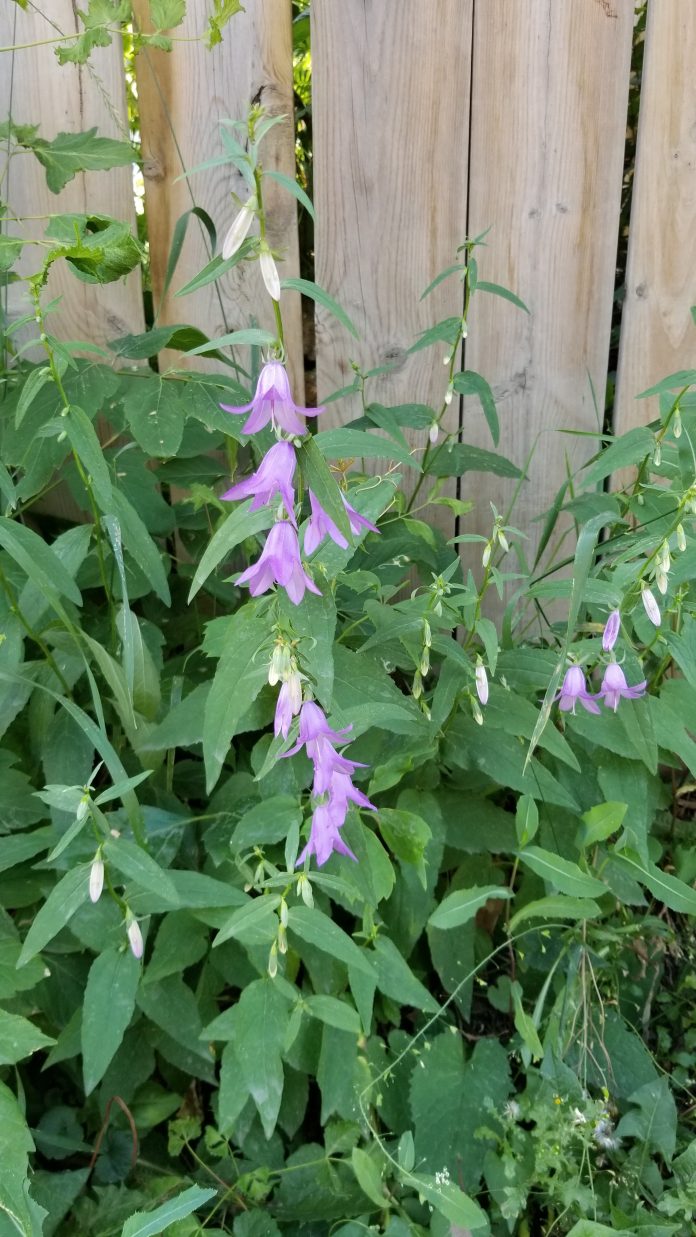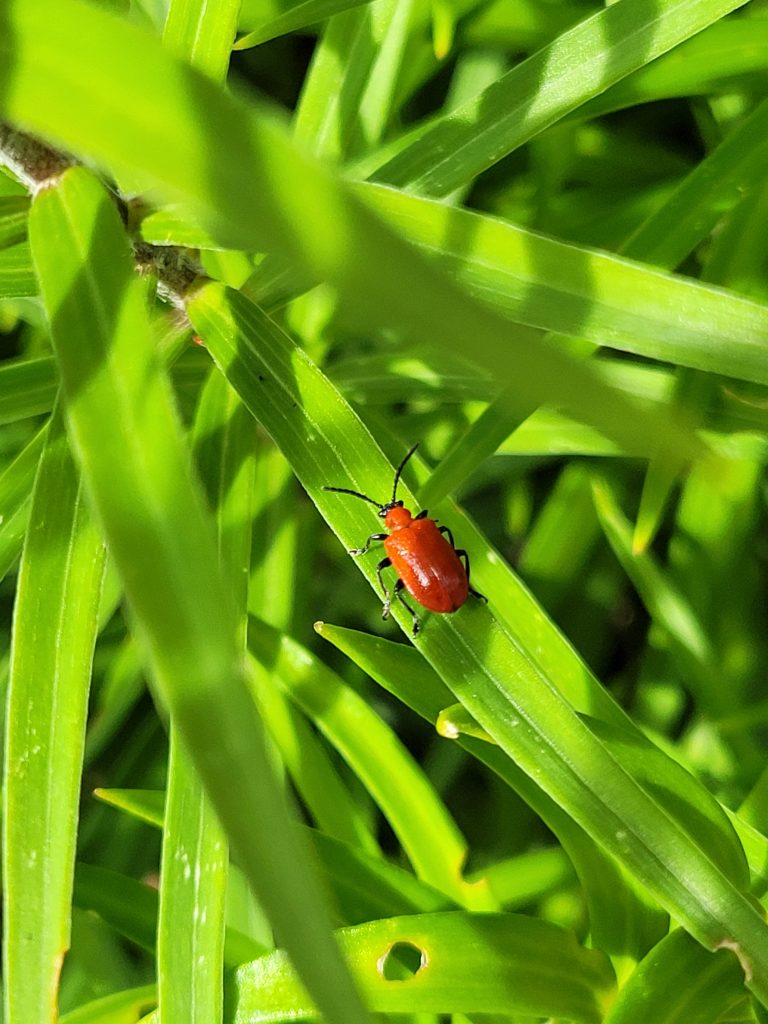
Bernadette Vangool
Home and Garden
My never ending fight with invasives starts in early spring with a fresh flush of creeping bellflower (Campanula rapunculoides) invading the back yard from the alley beyond. Diligent deep digging with a garden fork and carefully discarding the foliage and white carrot roots in the garbage keeps this infestation at bay until fall or next spring when hopefully the invasion will be less severe. I do not trust these to the compost pile as the vigorous roots are liable to survive the compost cycle. A last resort would be to eat the roots, but I find for this gardener, that the rewards after the cleaning process are not worth the bother. Also after a full day of digging I am truly done with it and don’t want to see it on my dinner plate.
Creeping Bell Flower is native to Europe and west Asia and has become extremely invasive in many parts of North America. The attraction to some new gardeners is of course the beautiful harebell like flowers that are abundant on each mature stem. Each plant has the capability to produce up to 15,000 seeds. If this was not prolific enough, the stem is attached to stolons, under the soil, which attach the plant to vertical straight tubers even further down or sometimes even a foot away horizontally from the mature stalk. Each piece of stolon or tuber broken off or disturbed by digging has the capability of nurturing a new plant. Digging by spade is not recommended as the roots tend to break. DO NOT ROTOTILL. If you do not have time to dig out your plant the first defence is to remove the stalk before they bloom, or continually pull the top growth, in the hope of weakening the tubers. If you are not averse to chemicals repeated applications of glyphosade will control this plant. (smothering with cardboard and mulch is ineffective.)
If you are discouraged in your fight with this wonderful Hellflower, you can join a support group on Facebook called Creeping Bellflower Battles and commiserate with those who share your woes.
Next up, the scarlet lily leaf beetle, my fight with him started early this spring, as I was trying to eradicate some grasses amongst a mature lily patch. Digging around before the lilies were barely above ground, I discovered a throve of mature lily beetles in the soil. At this stage they are difficult to catch, but it was quite satisfying to squish them underfoot. This prompted an inspection of my fritilaria, which were pretty much eaten in my central garden bed, they seem to prefer the checkered fritilaria quite ignoring the white varieties. With daily vigilance, handpicking the adult beetles, I saved my Martigon lilies from destruction, and they have come through the spring with minimal leaf damage and are about to bloom. Even though I monitored for eggs, on the underside of the leaves of my regular lilies, I have pretty much lost that battle and am removing stalks as I discover the larvae, covered in their own excrement on the lily leaves. This resulted in losing the majority of my lilies yet another year to this pest.

A relative newcomer to Manitoba, Saskatchewan and Alberta, the Lily Beetle has no known natural enemies in our region.
The lily beetle (Liloceris lili) is native to Asia and was first discovered in Montreal in the 1940’s. It is now a resident in all Canadian provinces except for British Columbia. A relative newcomer to Manitoba, Saskatchewan and Alberta it has no known natural enemies in our region. Three parasitic wasps are known to control it in its native habitat, of which 2 species released in Manitoba have survived the winter and seem to be controlling the infestations. Some research is being conducted at Olds College in Alberta, but I have been unable to obtain data from Saskatchewan.
Adult beetles, bright red in colour, with a black head, legs and antennae, emerge in May to mate and lay about 200 orange eggs on the underside of leaves on lily plants. Larvae yellowish gel-type bodies with tiny black heads start hatching and feeding in June, usually covering themselves with their own excrement. Larvae pupate underground in July-August when adults emerge and start feeding returning to the soil to overwinter in October.
In areas where the wasp has been released, chemical controls should be avoided. Hand picking adult beetles and larvae and checking for eggs in spring and summer should be your first defence.
The Saskatchewan Conservation Data Centre manages information on the distribution of the Red Lily Beetle. Please email observations and photo records to invasives.imap@gov.sk.ca.
This column is provided courtesy of the Saskatchewan Perennial Society (SPS; saskperennial@hotmail.com). Check our website (www.saskperennial.ca) or Facebook page (www.facebook.com/saskperennial) for a list of upcoming gardening events.

